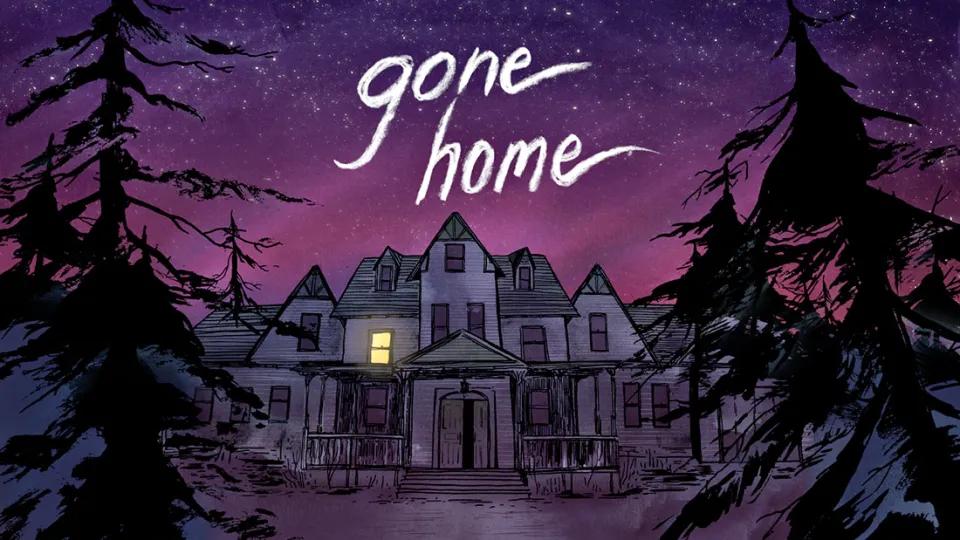The game I played is titled Gone Home. The synopsis of this virtual game is that it is set in the year 1995, we are in the role of a young woman returning from overseas to her rural Oregon family home to find her family currently absent and the house empty. We must navigate through the abandoned house and piece together recent events on our own.
From a design standpoint, starting from visuals, I really appreciate the color palette used. It ranged from eerie purples and reds, and the design of the house gave off a haunted vibe with very minimal light. These colors create an atmosphere of mystery where the main house draws you in. When we began, I didn’t expect the house to be so creepy (since the front area was a bit brighter in color palette). There are other lights you must actively open yourself because otherwise, it’s another dark corner, darkroom, and playing this game from the first-person point of view, evokes the feeling of suspension (as the darkness hides what’s there or what’s not there) as we continue navigating through the space.
Going to the audio design, the subtle thunderstorm that is happening outside creates a spacial dissonance of sound that any rumble of thunder can be felt (especially if you use headphones that capture bass very well). The rain in between the strikes creates a temporary lull before the player gets frightened again but the thunder. I could see this game getting revamped today with even higher quality graphics that enhance this immersion even more.
The mechanics of this game are limited to us being able to grab items and examine them, read or listen to notes/ memos, turn on and off lights, walk, and open and close doors. So actions that we can perform as humans. This really immerses us into the narrative which is this overarching theme of mystery: what do we know? What do we not know? And through the mechanics of exploration, we hope to uncover this unknown. No information is through at us but rather very succinctly added to the house and we must find these clues to really know the full story about ourselves and the family we grew up in. I really appreciate this nuance because it forces the player to actively use the actions we are given to explore the space and hopefully uncover the mystery by the end.
The narrative is tied in very well to the mystery. As mentioned before, it’s done very delicately and not all in our face which fortifies the confusion the players have because it’s ultimately up to the player to find out more (and there are things that the players can even skip entirely if they want to rush the game).



